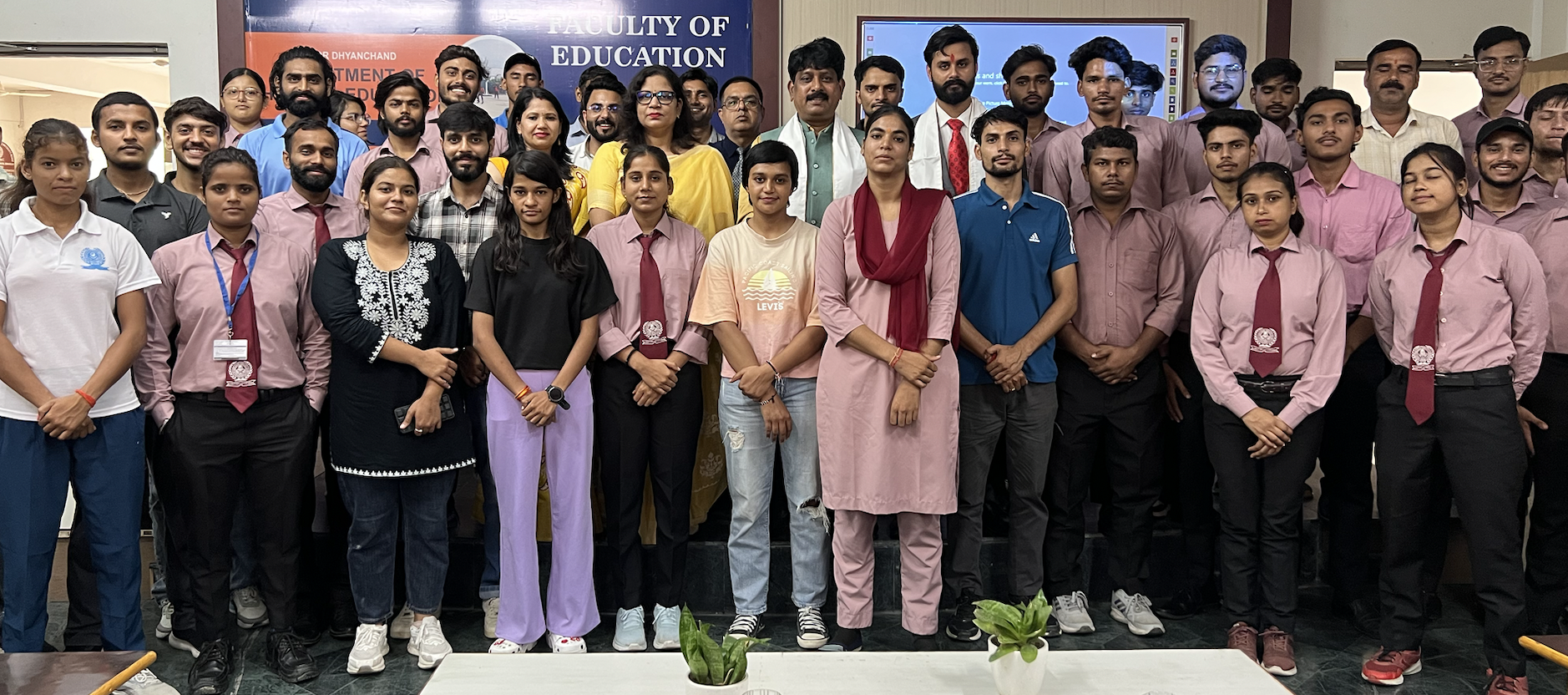Introduction: Bridging Philosophy and Practice
On the serene morning of August 8, 2025, the auditorium of Subharti University buzzed with anticipation. Students in neatly pressed uniforms, faculty members in traditional Indian attire, and yoga practitioners from across the city gathered to welcome a figure whose influence has been steadily growing across India’s wellness, academic, and spiritual landscapes — Dr. Shivam Mishra. Known for his ability to connect ancient yogic traditions with present-day needs, Dr. Mishra had been invited to deliver a guest lecture titled "Rational Thinking in Yoga: Philosophy Meets Practice."
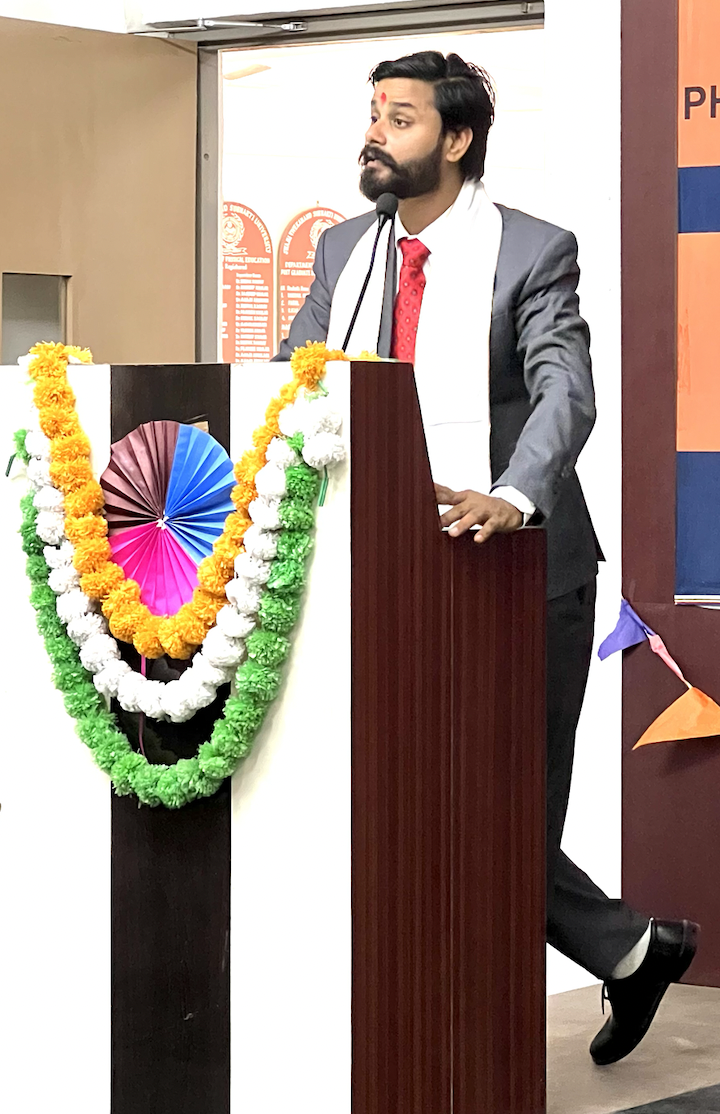
The Significance of the Lecture
While yoga is often celebrated for its physical benefits, its philosophical underpinnings sometimes remain overlooked in mainstream discourse. Dr. Mishra's lecture sought to change this narrative by delving into the rational frameworks that have historically supported yogic thought. He emphasized that yoga is not merely a collection of postures or breathing exercises but an integrated system of self-inquiry, disciplined living, and societal harmony.
Highlighting that philosophy is the invisible architecture of yoga, Dr. Mishra drew connections between Indian and Western schools of thought, showing how both traditions contribute to understanding yoga’s role in modern life. His interdisciplinary approach resonated with students of philosophy, psychology, and physical education alike.
Exploring Idealism in Yoga
Dr. Mishra began by addressing the concept of Idealism — the belief that reality is fundamentally shaped by the mind and ideas. He explained how classical yoga, especially as outlined in the Yoga Sutras of Patanjali, embodies an idealistic perspective by emphasizing inner perception over external appearances. The mind, he said, is the tool through which ultimate reality is experienced, and yoga provides the discipline to refine this tool.
Using relatable examples, he described how practitioners who follow an idealistic approach might prioritize meditative clarity, moral principles, and higher consciousness over material achievements. He related this to university students’ pursuit of knowledge, drawing a parallel between academic scholarship and yogic inquiry — both require patience, discipline, and a clear vision of the goal.
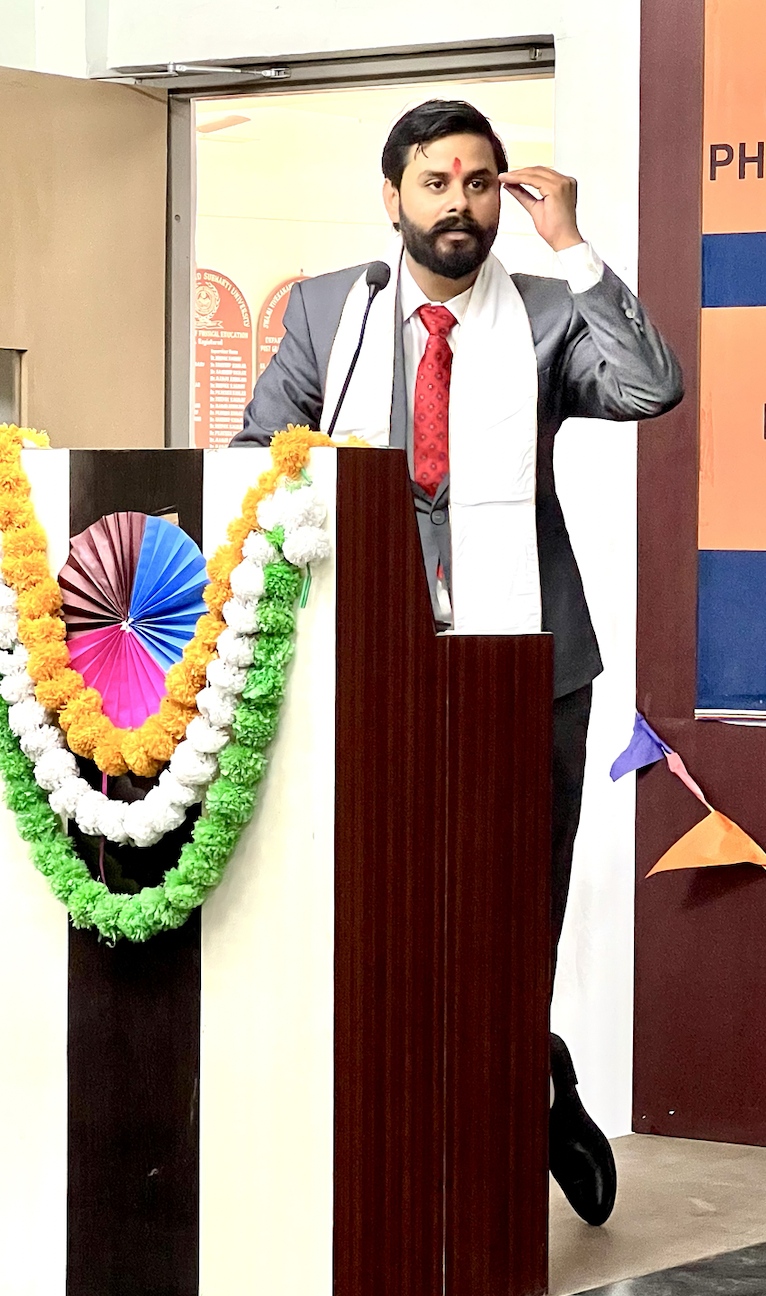
Pragmatism and the Practical Path
From Idealism, Dr. Mishra shifted the discussion to Pragmatism, the philosophy that truth is validated by its practical consequences. He noted that in yoga, a pragmatic approach manifests in the adaptability of practices to suit individual needs, lifestyles, and societal conditions. This perspective has been crucial in yoga’s global spread, allowing diverse cultures to integrate yogic techniques into their unique contexts.
Dr. Mishra cited examples of community health programs, school yoga curricula, and workplace wellness initiatives that embody this pragmatic spirit. He reminded the audience that pragmatism in yoga does not mean diluting its essence, but rather finding effective ways to apply timeless principles in a fast-paced world.
Other Philosophical Perspectives
In a particularly engaging segment, Dr. Mishra introduced lesser-discussed perspectives such as Realism, Naturalism, and Existentialism in the context of yoga. He explained how Realism aligns with the yogic acknowledgment of the physical body and environment as foundational realities that must be respected. Naturalism, he argued, resonates with yoga’s deep connection to the rhythms of nature, as seen in its seasonal practices and diet recommendations.
Existentialism, though rooted in Western thought, was linked to yoga’s encouragement of personal responsibility and self-discovery. “Yoga asks us to confront ourselves in silence, to make choices that define our inner and outer worlds,” he said, inviting students to see the mat as a metaphor for life itself.
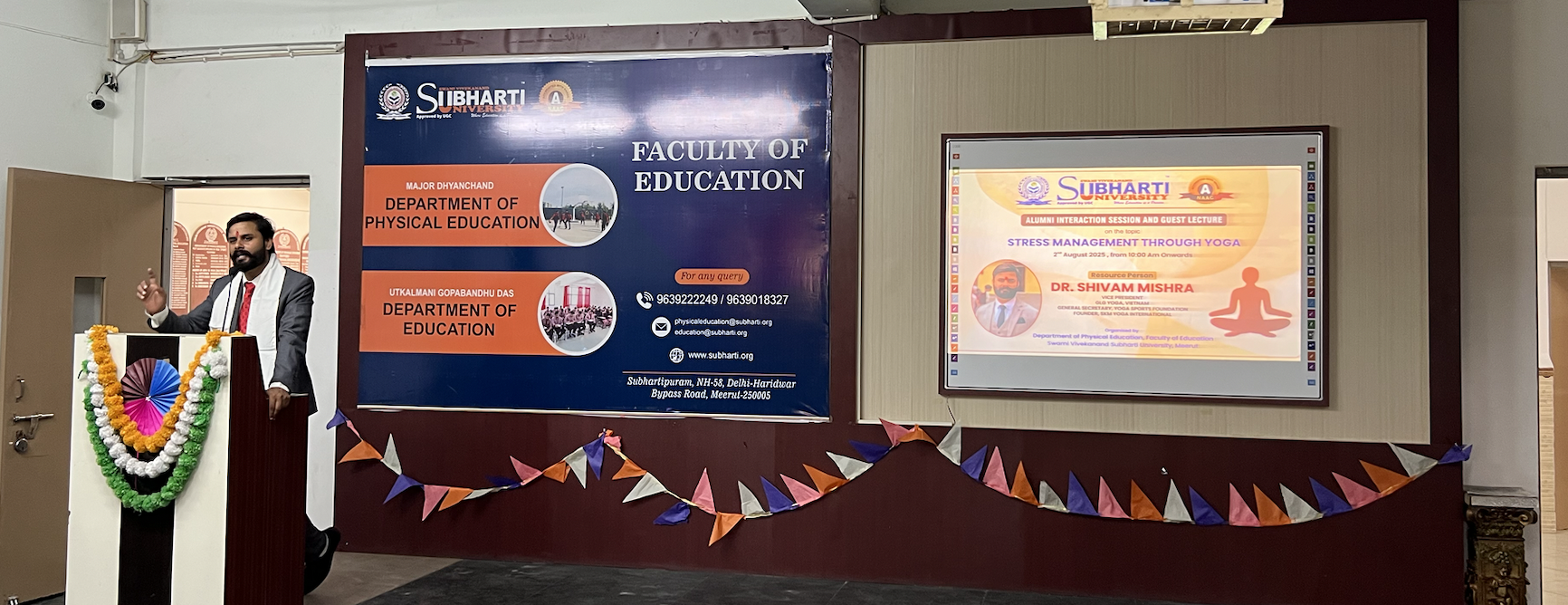
Interactive Q&A: From Theory to Application
The lecture concluded with an interactive Q&A session. Students posed questions ranging from the compatibility of yoga with scientific inquiry to its role in mental health. Dr. Mishra responded with characteristic clarity, blending scriptural references, scientific studies, and real-world examples. One student asked whether rational thinking could diminish the spiritual depth of yoga, to which Dr. Mishra replied, “Rationality and spirituality are not enemies — they are companions. Rational thinking helps us navigate the spiritual path without getting lost in superstition or dogma.”
Impact on the Audience
Faculty members praised the lecture for its balance of academic rigor and accessibility. Many attendees expressed that it shifted their perception of yoga from a purely physical practice to a multidimensional discipline. The event also sparked interest among students from non-yoga disciplines, particularly those studying philosophy, psychology, and social sciences.
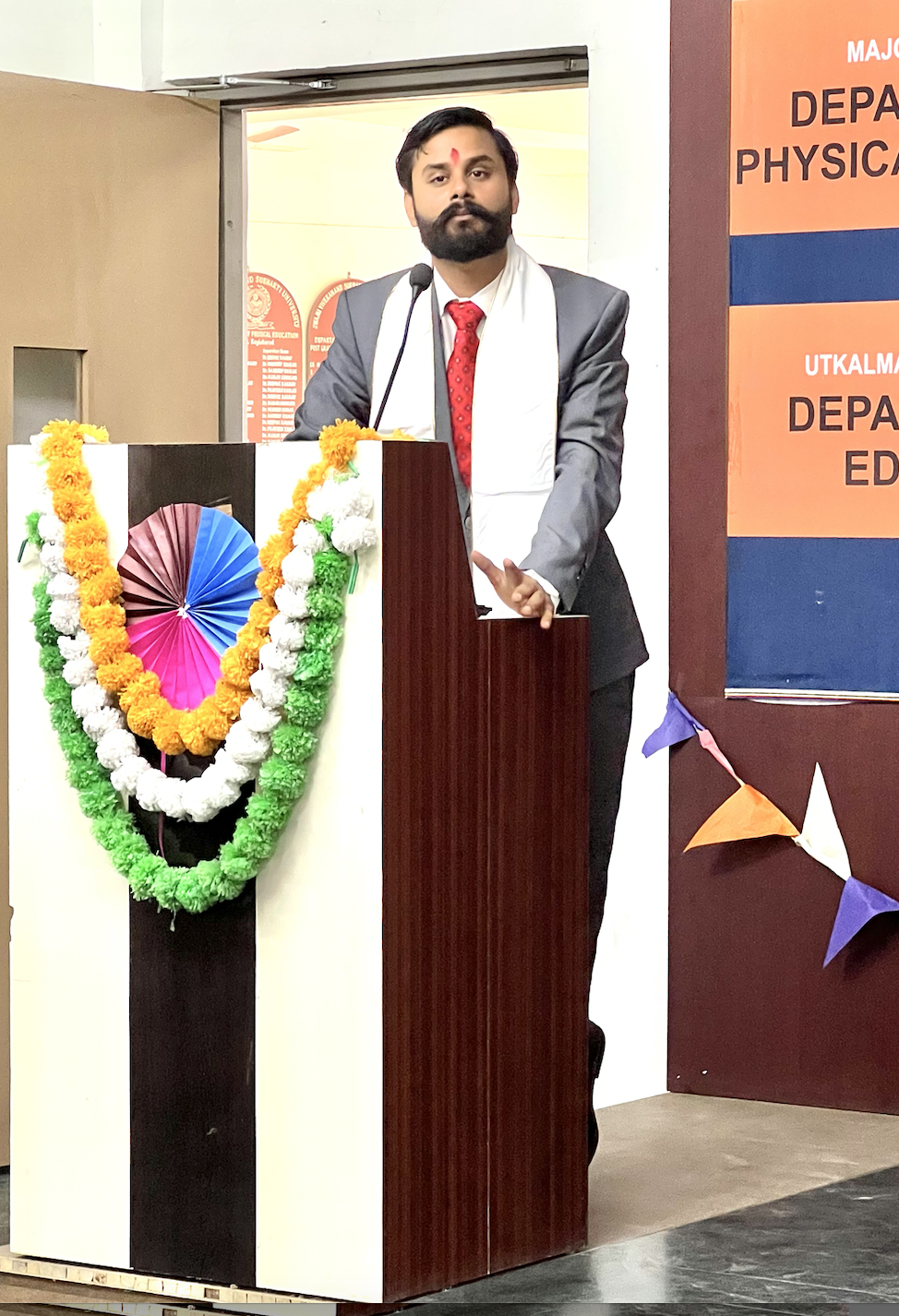
Closing Thoughts
Dr. Shivam Mishra’s visit to Subharti University underscored the importance of integrating philosophical inquiry into yoga education. By framing yoga through the lenses of Idealism, Pragmatism, and other philosophical systems, he offered a vision of yoga as a living, adaptable discipline rooted in rational thought and ethical practice. His message was clear: in an age of rapid change, yoga’s timeless wisdom, guided by rational understanding, can serve as a compass for both personal growth and societal well-being.
“Yoga is not about escaping reality; it is about engaging with it fully, wisely, and compassionately,” Dr. Mishra concluded, leaving the audience with a renewed sense of purpose.
